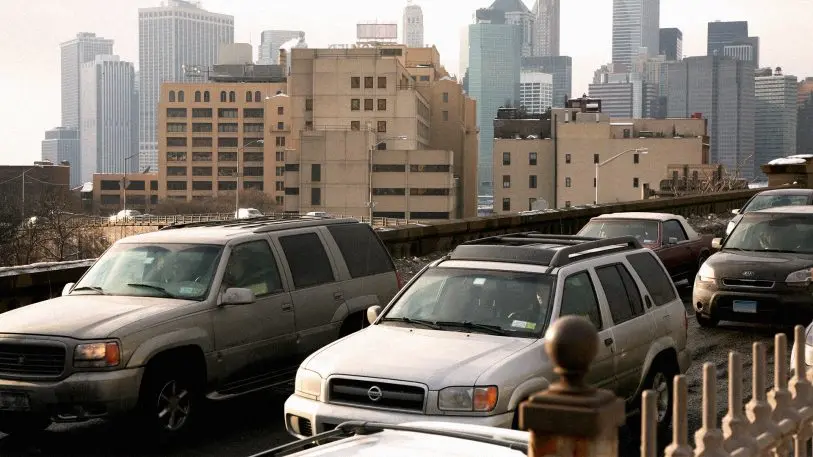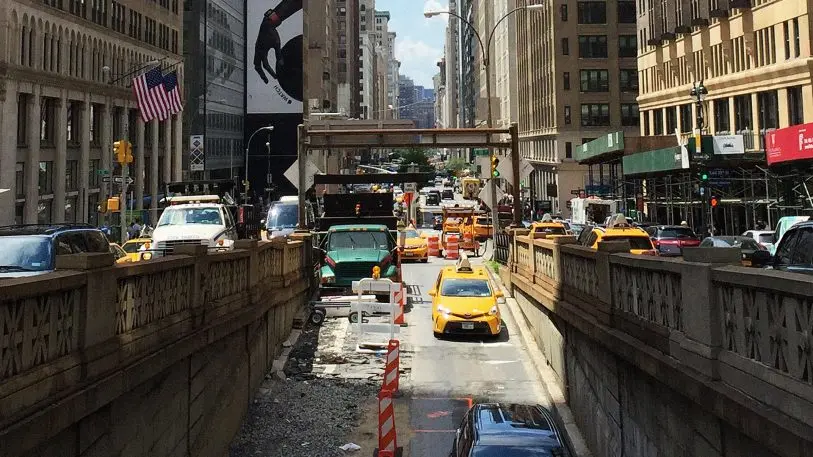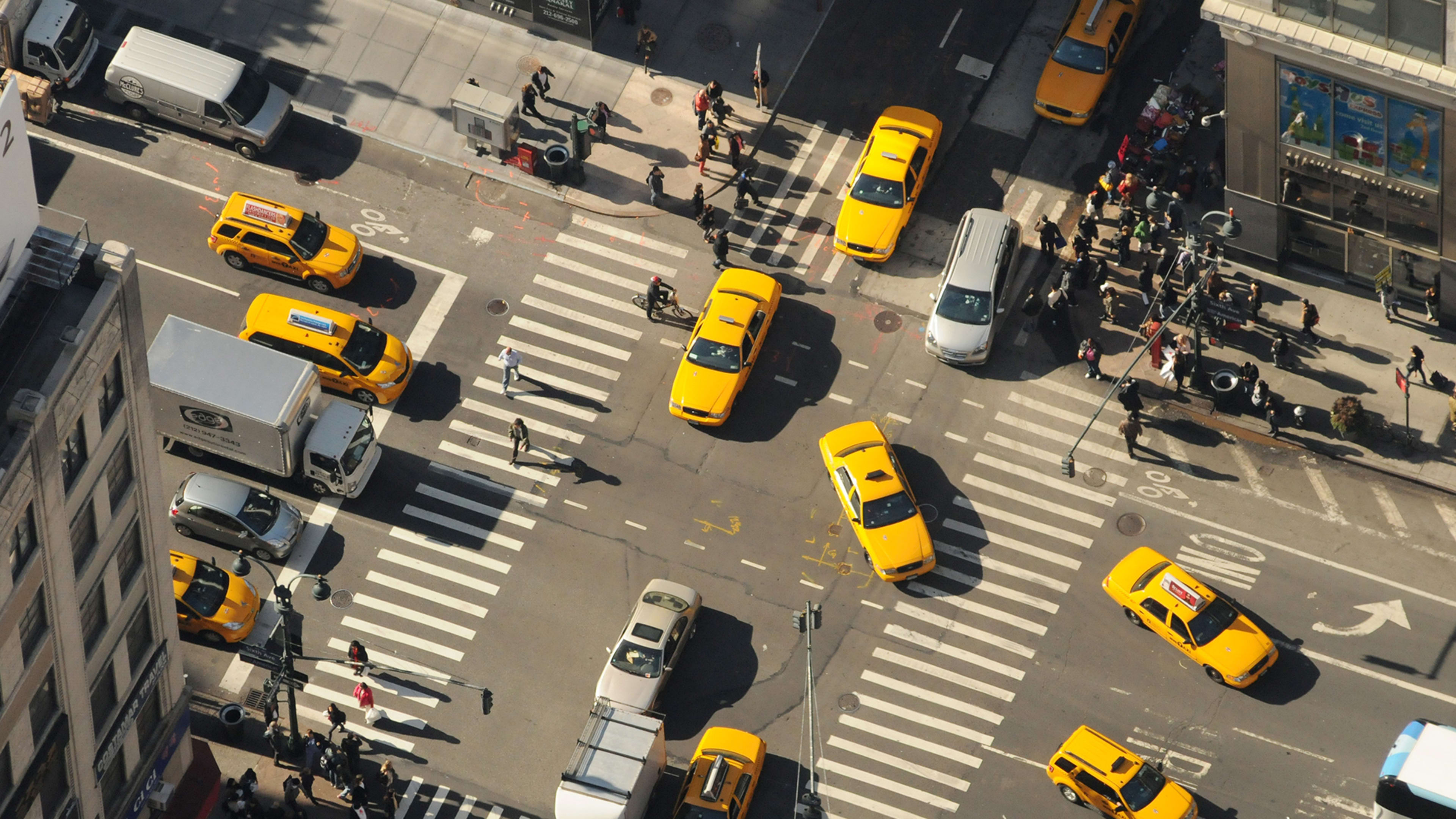Imagine a major airport with no air traffic control tower. Collisions and crashes would be commonplace. Circling aircraft would run out of fuel and drop from the sky. Planes would be stacked up on runways, stopped on tarmacs and stuck at gates. Chaos would reign. What was once regarded as reliable, if not slightly annoying, air transportation would become a daily dance with death.
Thankfully, the air traffic control tower–the airport’s brain and nerve center–prevents such catastrophes and confines air passengers’ grievances to security queues, cramped seating and dubious food.
Now imagine street traffic in any major city in the world. Gridlock, congestion, transit overcrowding and pollution contribute to an infuriating commute experience.

Why does traffic control exist for air but not for ground transportation? There’s the safety factor, obviously. Even though fatalities are much higher in cars than planes–Americans’ chances of dying in a car crash are 1 in 114 vs. 1 in 9,821 on a commercial or private flight (if you only take domestic commercial flights, your odds are much lower), according to the National Safety Council–the impact of a single air crash is much more catastrophic.
But there’s also a practical reason: limited runway space. There is far too much demand for landing slots at major airports. If airports managed runways like cities manage streets and roads, planes would show up en masse and impossible airport chaos would ensue. Instead, airports have a smart data management system that’s built around the maximum possible utilization of runways. Also, U.S. airports auction landing slots to the highest value users and diligently manage takeoff times and flight trajectories to ensure aircraft arrive in the right sequence and at the right time. Most folks regard the takeoff or landing queue as an annoyance rather than efficiency. But when you think of it, a plane taking off or landing about every two minutes is just smart management of limited space and time.

Simply put, airports maximize the utilization rights of the scarcest resource in the system, which is runways. If only cities had equivalent systems to solve traffic and transit congestion on their streets and thoroughfares. They will, and soon.
The brain and nerve center for urban mobility will be data systems that manage every aspect of a commuter’s daily travel.
This will arrive none too soon as the majority of the world’s population already lives in cities. The migration to cities was slow to take hold but has escalated in the past 70 years. In 1950, only 29% of the world’s population lived in cities. Today, it’s 55% and by 2050 it’s predicted to be 67%. And those cities are becoming larger and more complex. Today there are more than 500 cities with more than one million inhabitants compared with only 83 in 1950. Megacities with more than 10 million people today number 31, compared with just three in 1975 (Mexico City, New York City and Tokyo). In 2030 the number of megacities is expected to surpass 40.
As populations surge, the demand for urban mobility grows. The 25.8 trillion kilometers logged by the world’s commuters in 2010 is expected to surge 68% to 43.2 trillion by 2030, and expand another 55% to 67.1 trillion by 2050.
With few exceptions, the transit grid in these cities is not keeping pace with swelling populations and explosive demand for mobility. The tools with which cities manage mobility today are limited to speed limits, parking places and prices, public transit subsidies, and perhaps congestion surcharge zones.
Vastly more powerful tools will be required in the not-too-distant future when urban mobility evolves. Fleets of electric autonomous vehicles will shuttle small groups of people door-to-door across short distances. New mass transit services will shift to accommodate large groups of people at high speeds over longer distances. The interface between the two modes will be pick-up and drop-off zones, replacing today’s parking lots and garages. These new technologies will boost demand by making transit cheaper and more convenient, which could exacerbate congestion — unless we build systems to better manage urban mobility.
The answer is data systems that are the brain and nerve center equivalent to an airport’s air traffic control tower. For example:
- On-demand pick-up and drop-off zones will be managed to ensure vehicles arrive in sync with boarding passengers, eliminating lingering by both passengers and vehicles
- Locations, where on-demand vehicles wait when they’re not in use, will be identified and managed for efficiency
- Multi-passenger vehicles will be prioritized on roadways and vehicles will be re-routed to adapt to changing traffic flows
- Dynamic pricing and other policy mechanisms will ensure the number of vehicles never exceeds the road space they traverse, reducing traffic
When cities start managing their streets the way airports manage their runways, urban mobility will improve everywhere. For anyone sitting in gridlock or standing on a packed bus or train, it can’t happen soon enough.
Nir Erez is co-founder and CEO of Moovit.
This story reflects the views of the author, but not necessarily the editorial position of Fast Company.
Recognize your brand’s excellence by applying to this year’s Brands That Matter Awards before the early-rate deadline, May 3.
